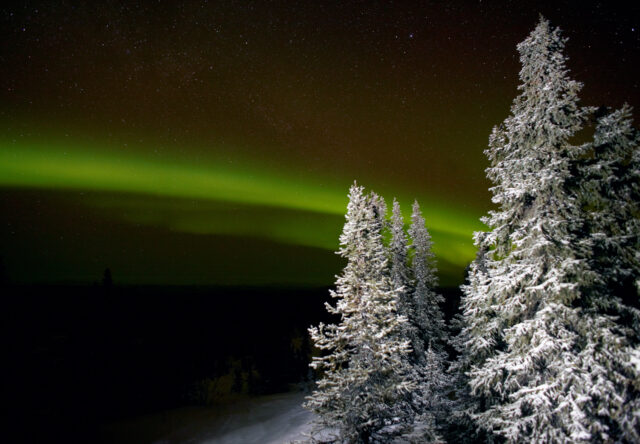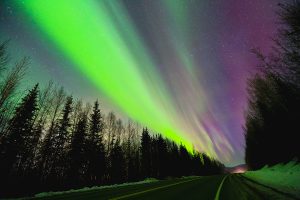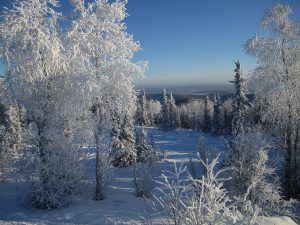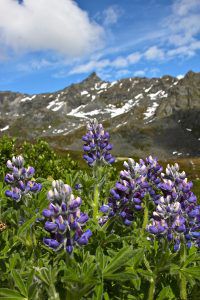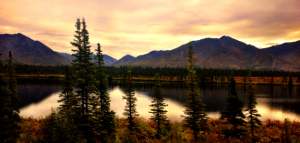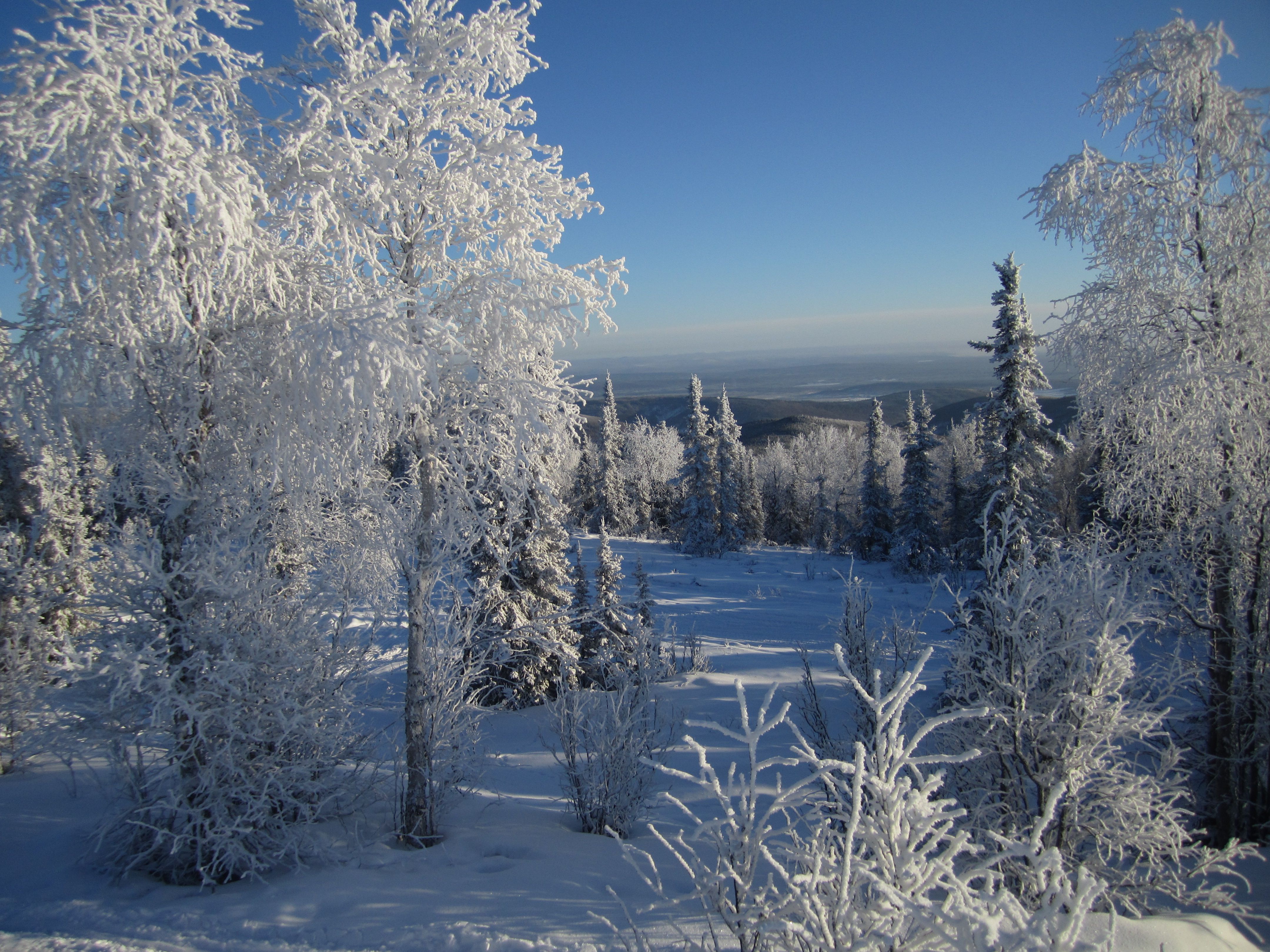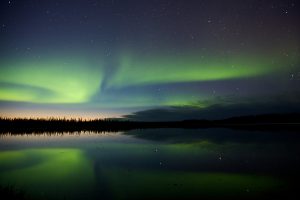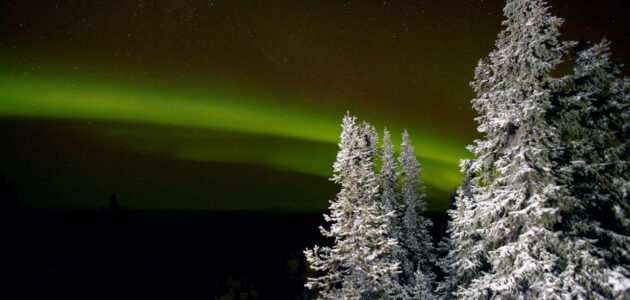
Alaska in winter is a wonderland of adventures and natural beauty. The snowy landscapes create a magical backdrop for various activities like dog sledding, northern lights viewing and ice fishing. Outdoor enthusiasts will revel in activities like skiing, snowboarding and snowshoeing amidst the blanketed wilderness. For those seeking a quieter, more serene side of Alaska, the winter months offer a slower, less busy experience. Keep reading for our comprehensive guide on visiting Alaska in the winter.
Winter Daylight Hours
Daylight hours across Alaska vary depending on location and the time of year. The state’s large size means that daylight hours can differ significantly from its southern to northern regions. During winter in extreme northern areas, such as Utqiaġvik, there can be several weeks of polar night, meaning no direct sunlight at all. In Fairbanks, Alaska’s second-largest city, daylight hours range from 11 a.m. to 2:40 p.m. on the winter solstice, offering about three hours and 40 minutes of daylight. Conversely, in more southern regions like Anchorage or Juneau, daylight hours are comparatively longer, but still notably shorter than during summer months. For example, on the winter solstice in Anchorage, daylight lasts for just under five and a half hours, ranging from 10 a.m. or 10:15 a.m. to between 3:30 p.m. and 3:45 p.m. Juneau has slightly longer daylight hours at about six and a half hours.
Best Months to Experience Alaska’s Winter
Alaska’s winter spans from October through April, with diverse weather conditions across the state. November through March typically sees the coldest temperatures, with temperatures dropping well below freezing in the interior and north regions of the state. For visitors, February and March stand out as recommended months due to a balance between winter activities like dog sledding and northern lights viewing, coupled with slightly longer daylight hours, compared to the darker months like December and January. There’s no need to worry about the chilly temperatures either once you know how to pack for Alaska winter weather.
February
February is an ideal time for experiencing the aurora borealis, especially in areas like Fairbanks or near the Arctic Circle. Across the state, there are options to try your hand at a dog sledding adventure or the slopes with some skiing and snowboarding. February also marks the beginning of the Anchorage Fur Rendezvous Festival, Alaska’s largest and oldest winter festival. The World Ice Art Championships in Fairbanks also begins in February, where visitors can see some of the finest ice sculptors from around the world’s impressive art ice.
March
March remains an excellent time for catching the northern lights, with slightly longer daylight hours allowing for more extended outdoor explorations. It’s the perfect time to partake in winter sports like cross-country skiing or snowshoeing as temperatures gradually start to rise. The famous Iditarod Trail Dog Sled Race usually kicks off at the start of March, with a ceremonial start in downtown Anchorage during the Fur Rondy festival.
8 Things To Do in the Winter
1. Take a Dog Sledding Tour
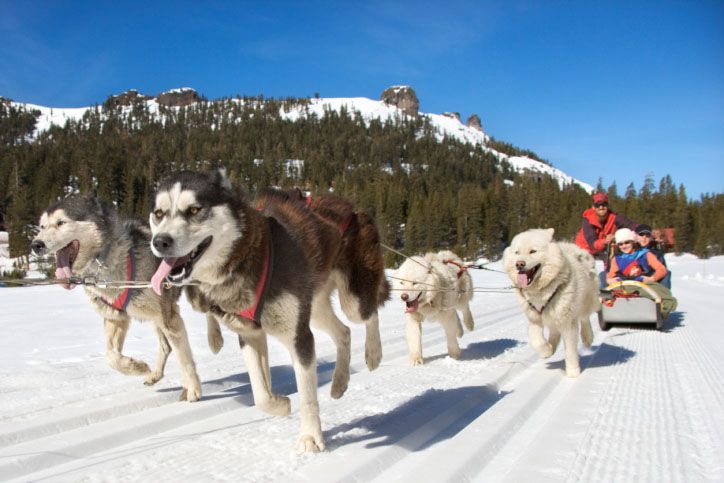
You’ve heard of the Iditarod, but did you know you can also mush your own dog team? And you don’t have to commit to 1,000 miles to spend time with some adorable huskies. Several companies throughout Alaska offer dog sled rides for an afternoon.
2. View the Aurora Borealis (Northern Lights)

There are few sights more spectacular than the northern lights. On a clear night outside of urban areas, you can see the characteristic green and red bands dancing across the Alaska sky. Some of the best viewing of the aurora borealis is during March between midnight and 3 a.m. However, the northern lights can still be seen during other winter months, with varying intensity and frequency.
During the winter months, the northern lights can be visible across Alaska. Fairbanks is a popular spot for viewing the aurora, due to its position under the aurora oval, offering frequent and spectacular displays. Additionally, more remote areas like the Arctic Circle provide clearer skies and reduced light pollution, enhancing the aurora viewing experience. If the northern lights are at the top of your bucket list, be sure to check our comprehensive guide to viewing the northern lights in Alaska.
3. Attend a Winter Festival
Alaska’s winter season offers several fun festivals that celebrate the state’s unique culture. These events bring together communities and offer a variety of different experiences.
Iditarod Trail Sled Dog Race
The Iditarod is an iconic Alaska event, the trail spanning nearly 1,000 miles across the state. A celebration of the historic serum run to Nome in 1925, the beloved dog sled race demonstrates the cultural and historical significance of dog sledding in Alaska. Visitors can watch the ceremonial start of the Iditarod Trail Sled Dog Race in downtown Anchorage, or can venture to Willow for the official race start.
Fur Rendezvous
The Fur Rondy festival in Anchorage celebrates Alaska’s uniqueness with activities like snow sculpture competitions, the ceremonial start of the Iditarod, the Alaska Native traditional Blanket Toss and the infamous Outhouse Races, an event where contestants race outhouses on skis. The festival begins in late February and runs through early March.
World Ice Art Championships
The World Ice Art Championships in Fairbanks attract sculptors from around the world to create stunning ice masterpieces. The competition is open from mid-February to early March, with the ice sculptures available for viewing until the end of March.
4. Go Skiing and Snowboarding
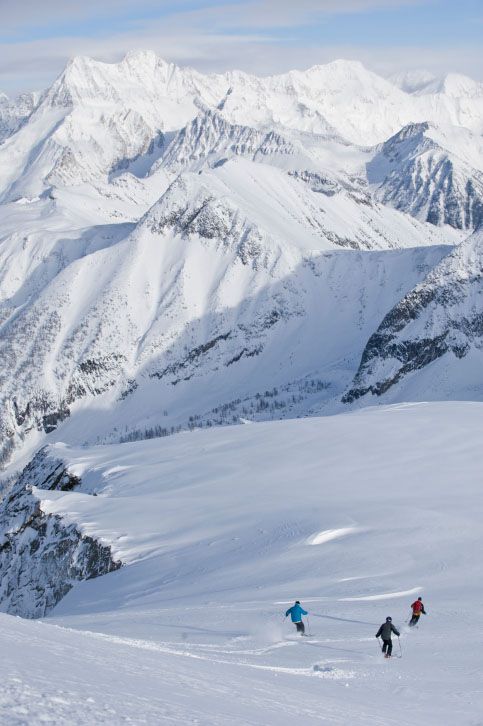
You’ll be hard-pressed to find a longer ski season and more beautiful terrain than Alaska offers. Alaska is the perfect destination for winter sports and offers a few different, beautiful locations for getting outside.
Kincaid Park
Cross-country skiing at Kincaid Park in Anchorage offers miles of scenic trails through the 1,500-acre park. Moose can be spotted year-round and bears are spotted in the spring and summer, so make sure you have your bells and whistles on.
Hilltop Ski Area
Located in Anchorage, Hilltop is a local favorite spot for getting outside. With a newly renovated café and bar, outdoor firepits and slopes for all skill levels, Hilltop is a great option for a day outside.
Ski Land
Make your way to the farthest north chairlift in North America at Ski Land in Fairbanks. Hit the slopes with views of the Brooks Range and Alaska Range.
5. Try Snowshoeing
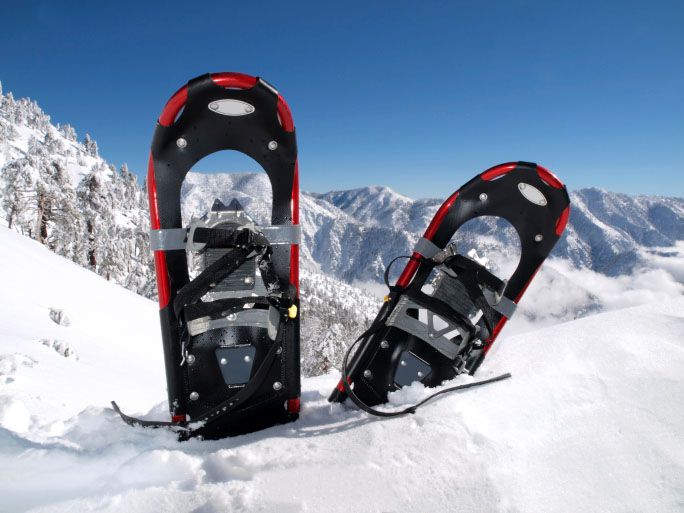
Experience the great outdoors while getting your exercise. Snowshoeing is a wonderful and eco-friendly way to explore Alaska, from the Glen Alps Powerline Pass to the Matanuska Peak Trail. If you need a rental, we recommend Alaska Outdoor Gear Rental, REI or Alaska Mountaineering & Hiking.
6. Rent a Snowmachine
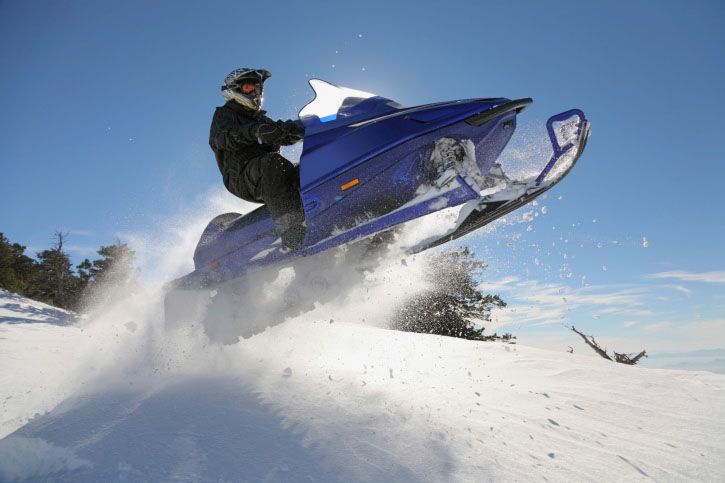
If you have a need for speed, check out Alaska’s groomed snowmachine trails. There’s no better way to blow off steam in the wilderness. Alaska is home to over 60,000 registered snowmachiners. Spot some caribou along the Denali Highway trail, explore the Tongass National Forest in Juneau, or venture through the snowy landscapes of Hatcher Pass.
7. Go Ice Fishing
Alaska’s vast network of frozen lakes and rivers during winter provides an ideal setting for ice fishing, with opportunities to catch various fish species like trout, salmon, and Arctic char. For the best ice fishing in Alaska, here are some of our recommended locations:
Nancy Lake State Recreation Area: In the Matanuska-Susitna Valley area just north of Anchorage, Nancy Lake is a popular spot for ice fishing for northern pike.
Jewel Lake: Found in Anchorage, Jewel Lake is easily accessible and offers opportunities to catch various fish species, including stocked rainbow trout.
To ice fish in Alaska, visitors require a valid fishing license, which can be obtained through the Alaska Department of Fish and Game’s website or from authorized license vendors.
8. Soak in a Hot Spring
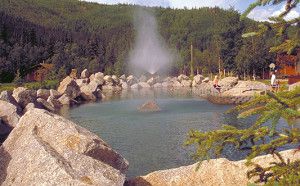
What could be better after a few hours in the night air than a dip in some local hot springs? Alaska’s volcanic landscape boasts as many as 100 (discovered) natural hot springs. Be careful if you go off the beaten path. Some springs are as hot as 219°F. Most popular and accessible is Chena Hot Springs, a 50-mile drive from Fairbanks.
4 Recommended Alaska Winter Destinations
Fairbanks
Fairbanks is renowned for seeing the northern lights, the World Ice Art Championships and Chena Hot Springs, as well as various winter activities like dog sledding, backcountry skiing, snowshoeing and more. Don’t miss our blog on more things to do in Fairbanks in the winter.
Anchorage
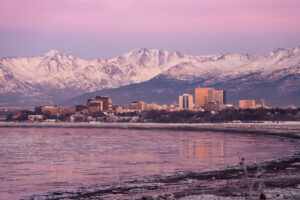
Anchorage, being the largest city in Alaska, offers a plethora of winter activities, including skiing, snowboarding, ice fishing and wildlife viewing. The city hosts the Fur Rendezvous festival and the ceremonial start of the Iditarod, both of which are not to be missed!
Girdwood
A short drive from Anchorage, Girdwood is home to a local brewery, numerous coffee shops, and delicious restaurants. On your drive, keep an eye out for Dall Sheep and watch ice move across the Turnagain Arm with the tide.
Nome
Why not watch the ceremonial Iditarod start in Anchorage and then travel to Nome for the finish? As a northern town, Nome is a great spot for seeing the northern lights and escaping the city bustle.
Plan your winter getaway at Westmark Hotels
Whether planning a visit for the holidays or at the tail end of winter, Alaska has an abundance of activities and sights to offer. From northern lights to sled dog races to outdoor sports, Alaska in winter is a unique and magical experience that everyone should enjoy once. If you don’t know where to start in building an itinerary, our knowledgeable staff can help you while booking your stay with Westmark Hotels.


